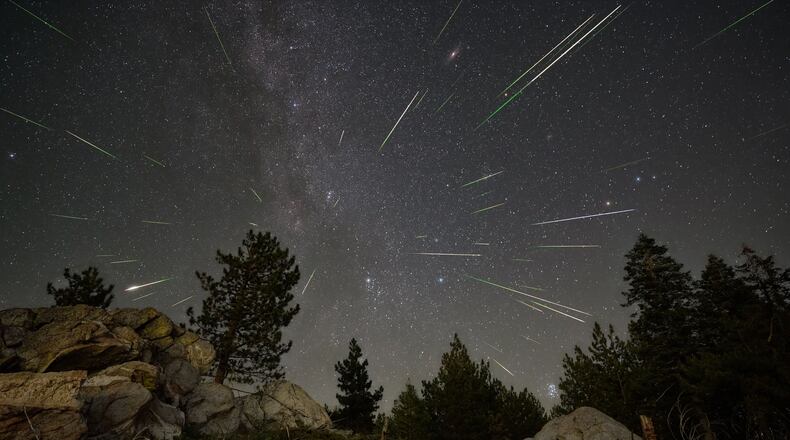After the excitement of a fireball streaking across the Georgia sky in June, avid skywatchers will once again be able to delight in July with meteor showers.
Two major shower shows begin this week, with the Perseids active from Thursday through Aug. 23 and the Southern Delta Aquariids active from Friday through Aug. 12.
Perseids will peak Aug. 12-13; Southern Delta Aquariids will peak July 29-30.
The waning gibbous moon will reduce Perseids’ activity this year. The Southern Delta Aquariids traditionally has steady meteor shower rates for a week, though they can be trickier to spot because they lack trains and fireballs.
Here’s a closer look at both and how to see them:
Southern Delta Aquariids
Southern Delta Aquariids is easiest to view at night and in the early morning, especially at dawn in a moon-free sky. You can see the shower by looking to the south.
At its maximum rate, the shower can reach up to 20 meteors per hour. Southern Delta Aquariids’ comet of origin is suspected to be 96P/Machholz, which orbits the sun once every five years.
Southern Delta Aquariids gets its name from the constellation Aquarius, where it appears to originate, and Delta, the third-brightest star in that constellation.
Perseids
Perseids is the more popular and larger of the two showers, though this year’s moon might diminish it.
Like Southern Delta Aquariids, Perseids is easiest to view in the early morning when its radiant point, or origin in the sky, is at its highest. Skywatchers can gaze in the northeast direction toward the constellation Perseus to catch a glimpse of the shower.
The meteor shower originates from comet 109P/Swift-Tuttle and gets its name from Perseus, where the meteors seem to originate in the sky.
How to view meteor showers
Your best shot at glimpsing one of nature’s greatest sky shows is by finding a spot away from cities. Online light pollution maps can help guide you to the best viewing places. The website EarthSky has a map with pinpointed locations for optimal stargazing.
Be sure to allow your eyes time to adjust to the dark. Meteors tend to fall in spurts, so it’s best to give it at least an hour to allow your eyes to adjust and see showers.
If the moon is out, be sure to look at parts of the sky away from it or get behind an object to help obscure the light.
“The best conditions for viewing meteor showers will be away from city lights and light pollution. Pick a location with no obstructions, like tall buildings or trees, and with a clear, dark sky,” Shelly Humble, director of marketing for Tellus Science Museum in Cartersville, told The Atlanta Journal-Constitution in a statement.
“Since sunset is so late in the day this time of year, optimal time will likely be very late into the night — even into the early dawn hours,” she added.
About the Author
Keep Reading
The Latest
Featured


